How a UK lab saved a pair of Pele's football boots
- Published
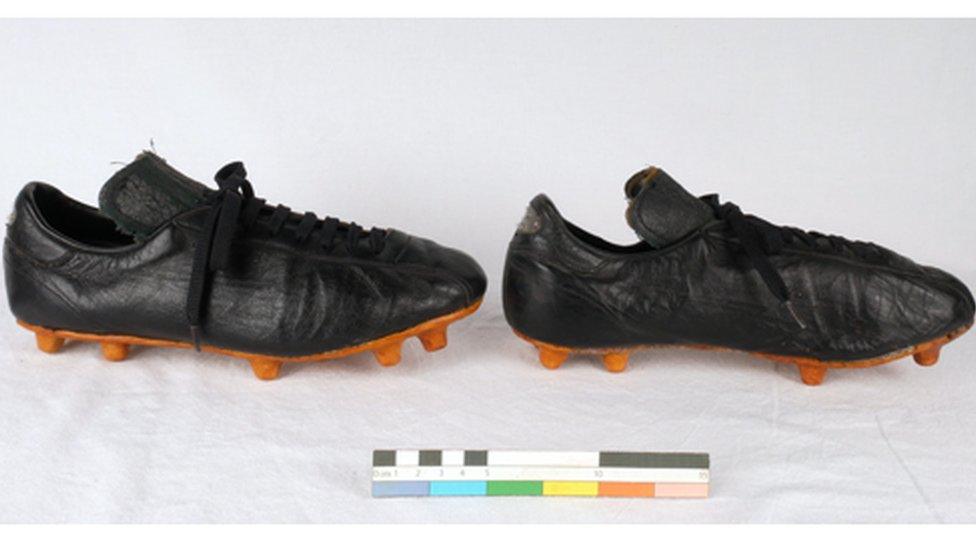
The boots were conserved through doing bits of restoration to the plastic soles
When a collector hoped to put Pele's boots on display at the National Football Museum, they turned to a specialist conservation service in Wiltshire to get them looking closer to their appearance when on the feet of the legendary footballer. It was a task that would take six months - and overcoming some unexpected hurdles.
Edson Arantes do Nascimento - or Pele - is one of the greatest football players to ever grace the beautiful game.
Three World Cup wins for Brazil, 92 international caps and 77 international goals. In Brazil's 1970 win, Pele had a hand in 53% of their 19 goals.
He also won seven league titles with three different clubs, making him potentially the greatest player of all time.
More on Pele:
So much was his legend in the game that both Brazil and the footballing world stopped when he died in 2022.
Now, one conservator has been helping to protect his legacy and save a pair of his boots.

Pele is considered one of the greatest all-time players
It took 57 hours over the course of six months for Kayleigh Spring to finish the conservation work on the boots, which may have been used in 1969.
She works at the Conservation and Museums Advisory Service, external, based at the Wiltshire & Swindon History Centre in Chippenham, where a colleague had already conserved a pair once worn by George Best.
Now Ms Spring has published an academic paper, external explaining how she did it.
She told BBC Radio Wiltshire: "The main area of deterioration was the plastic soles on the boots. They had plastic soles and leather tops. The leather was dirty and bit misshapen, but was in very good condition.
"The plastic was cracked, had areas missing and there was also this hard white blooming on the surface, which is a common feature of plastic deterioration.
"It's actually the fillers and additives that are added to the plastic, so as they break down they migrate out and they form this kind of coating."
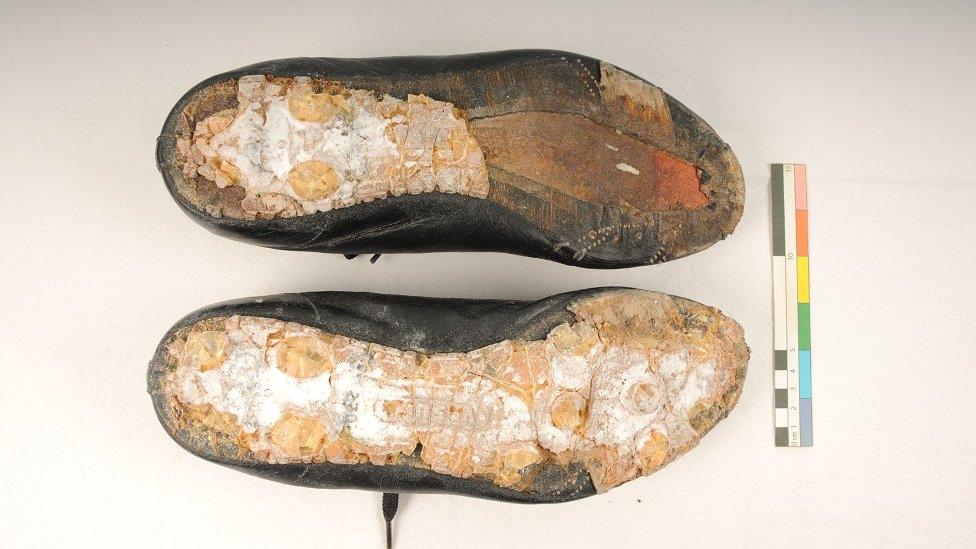
The soles were the part in worst condition when they first got the boots
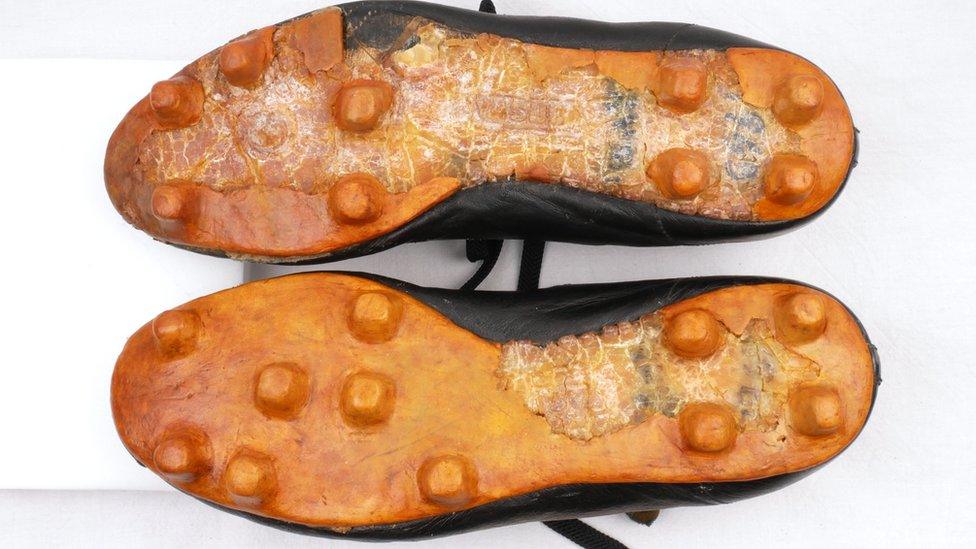
After some trial and error, they stuck the remaining bits on carefully and developed a putty that could match the original soles as close as possible
Ms Spring said they had to do a lot of testing, but she had a plan from a colleague that she could follow after the lab's previous work on Best's boots.
Except it did not work on this plastic, which unexpectedly crumbled and cracked.
"Plastics are a difficult thing to conserve," she said.
"It's a bit of a contradiction - everybody thinks plastics will last forever. Environmentally, they're not great, but in museum collections, we're finding plastics are breaking down a lot faster.
"The composition varies so much, they're really difficult to maintain."
They worked out who made the boots originally - a company called Yasuda in Japan - but found it did not have the details on how the soles were made.
After trying a few different mixes, Ms Spring said they put together a putty which could be used to show what the boots would have looked like.
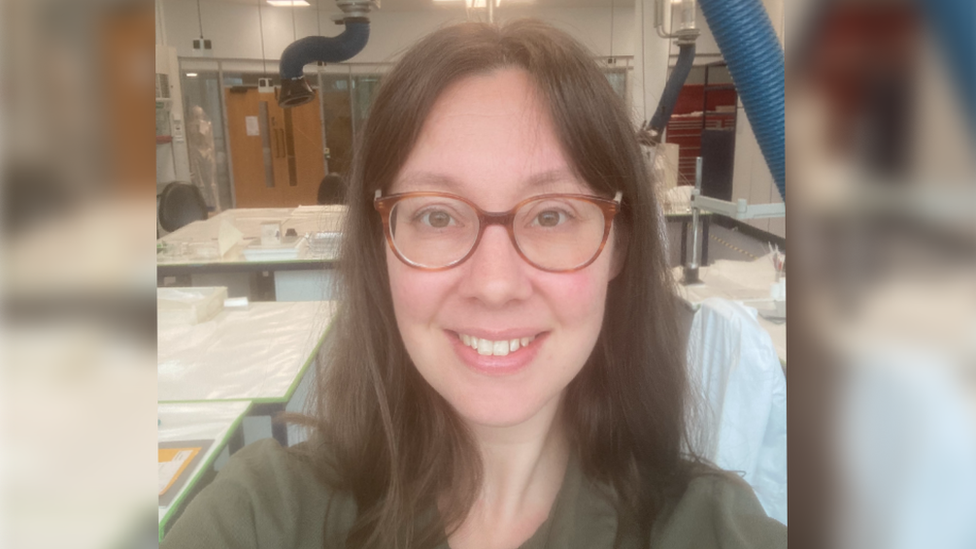
Kayleigh Spring works at the Conservation and Museums Advisory Service, run by Wiltshire Council at the county's History centre
Museums care for collections carefully, such as packing objects in acid-free paper, checking humidity and repelling pests that might come to nibble on things.
They aim to preserve as much of an object's story as possible.
And it was this purpose that Ms Spring had in mind when they noticed a hitchhiker attached to one of the boots - a small blade of grass.
"That's so significant because it shows they were actually worn, they weren't just a showpiece," she said.
"I had to make sure it stayed attached to the surface, I didn't want to risk losing that bit of information."
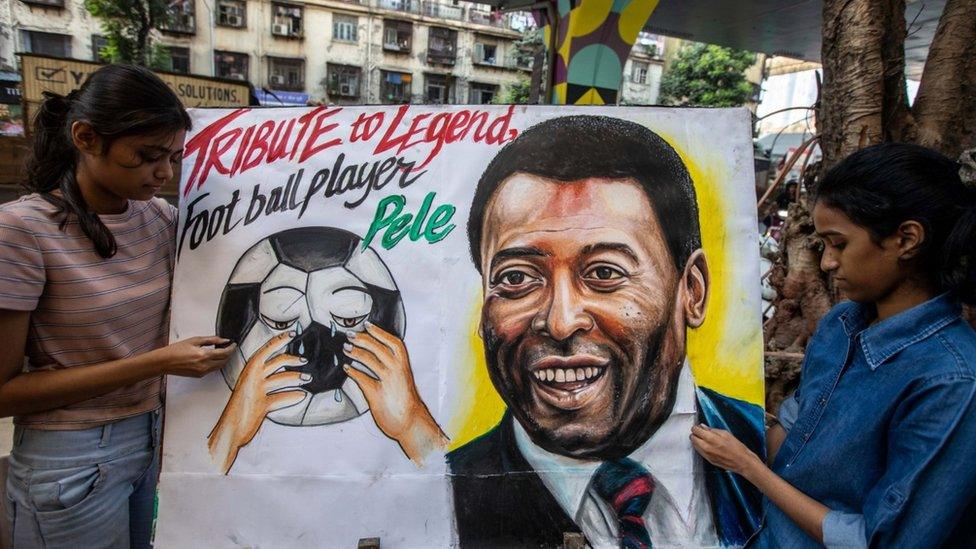
The death of Pele, in 2022, was mourned across Brazil and the wider football world
Pele's boots are now back with their owner after the restoration work in 2019.
They were going to be displayed at the National Football Museum, but the pandemic meant it did not happen.
However, the museum, external does have other items in its collection that belonged to the legendary player, including a passport and a World Cup winners' medal.

Follow BBC West on Facebook, external, X, external and Instagram, external. Send your story ideas to: bristol@bbc.co.uk , external
Related topics
- Attribution
- Published29 December 2022
